Stipe Modrić, a veteran military mechanic who once specialised in repairing cars for brave Croatian soldiers during wartime, gave birth to the football legend. Luca was a small boy when the terrible events that took place in his hometown of Zadar during the Croatian War occurred. His family spent their entire lives running from Serbian aggressors during the Bosnian War.
We are going to tell you the Whole Story of “Lucky Luka,” a Croatian football legend who played for Real Madrid.
You may read a detailed account of all the significant occasions in Luka Modric’s early life in our version of his biography, which also includes his childhood tale. The Real Madrid Legend’s journey to triumph in the beautiful game is then explained to you.
The examination of Modric’s past includes his life before to stardom, his familial background, and numerous little-known OFF-Pitch and ON-Pitch details.

Story of Luca Modric: From War-Torn Childhood to Football Legend.
Yes, everyone is aware of his skills, but not everyone is aware of our fascinating Luka Modric Life Story. Without further ado, let’s go right to the core of Modric’s narrative.
Luka Modric Childhood Story – Early Life and Family Background:
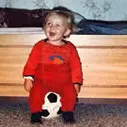
This is Luka Modric when he was a young boy.
To begin with, Luka Modrić physically touched down on Earth on September 9, 1985, in the Croatian city of Zadar. The legendary Croatian football player was born into a family of refugees who had already run from Serbian invaders during the bloody Bosnian War decades earlier.
Our research indicates that Luka Modric’s father, Stipe Modrić, is a retired military mechanic who worked on the vehicles of brave Croatian soldiers, particularly during wartime. Luka Modric’s mother, Radojka Modrić, was formerly employed as a textile worker.
When Luka was a young boy, he witnessed the terrible events that took place in Zadar during the Croatian War.
When discussing Modric’s early years, NK Zadar chairman Josip Bajlo said, “There was this little boy who did nothing but kick the ball around at the hotel parking lot all day.”
“Despite his thin build and small stature for his age, it was immediately apparent that he possessed a unique quality.”

Little Luka had already come to terms with his life goals at this age.
Luka’s small frame was always a source of criticism. He was thought to be frail and undersized, incapable of developing the build of a football player.
It’s safe to assume he’ll be a major player. However, Luka was concentrating on playing alone in front of his family’s hotel room, so the ball was “pretty in his legs.”
A youth trial was the only way he could find out if he was good enough to play football. This is how the opportunity appeared in the career summary.
Career Summary: Hajduk Split was the site of Modric’s initial juvenile trial. Sadly, as others have stated, he was turned down by Hajduk Split because he lacked the necessary physical characteristics.
What God did for this particular gene of his that altered his story is still unknown. The fact that Luka was destined to be a top player was still shocking.
Young Luka put all of his energy into working diligently. He later dispelled the false belief that he was diminutive and physically frail.
This occurred during a period when Dinamo Zagreb gave him what some would refer to as “A narrow success.” He had a happy career beginning.
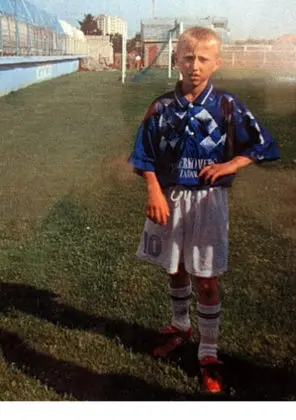
Modric eventually demonstrated a great deal of faith and quality as soon as he walked into the club. His contract was swiftly extended to ten years by Dinamo Zagreb.
After being given a lot of growth boosters by club authorities, he grew taller gradually.
After playing for Dinamo Zagreb, Luka was loaned out to Zrinjski Mostar in an effort to gain additional experience. At this juncture, his career truly took off. In Bosnia, he also spent another loan period at Inter Zaprešić.
He returned and made his Dinamo senior debut in 2005 after gaining a great deal of maturity. Along with them, Luka won domestic cups and three straight first-division league titles in Croatia. Once more, Modric won the title of Prva HNL Player of the Year in 2007.
The young player transferred to Tottenham Hotspur, a Premier League football team, in 2008. He guided Spurs to their first-ever UEFA Champions League (UCL) berth during that time. Luka contributed to Spurs’ 2010–11 campaign, which saw them get to the quarterfinals.
The teenage player transferred to Real Madrid for a hefty £33 million fee after the 2011–12 season. As they say, the rest is history now.
Luka Modric’s Family Situation:
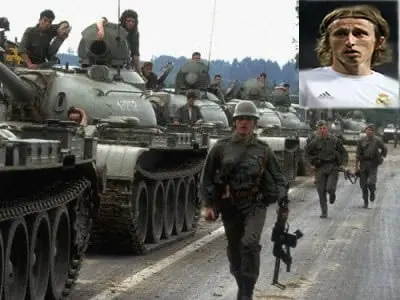
As stated earlier, his family were victims of the Bosnia war. They spent their lives fleeing from Serbian aggressors.
Lack of a home, few clothes and shelter made his family very poor during the period they were unsettled.
Soon, their refugee poor family background changed when Luka Modric’s father, Stipe Modric, got a decent job as a Croatian Army mechanic.
At that time, Luka’s Grandfather, who was also called Luka, was a Soldier who fought along connecting major towns.
His life was feared as the Serbian Army, the JNA and the army of the “Krajina” carried out intensive fighting and military activities in his zone. Grandfather Luka was killed by his enemies.
After his death, Luka and his family moved to Zadar. As soon as they left, they immediately lit their house on fire – says Stanko Modric, a close relative of the Luka Modrić family.
At Zadar, they settled in a cheap hotel, thanks to monies made by Luka’s father, Stipe Modric, who still remains an expert mechanic. Stipe continued his mechanic job at Zadar.
He provided for his family, thus making them move above the poverty line to a higher middle-class family background. It was a Zadar that Luka started playing football, as stated earlier.
Thanks to Luka’s Career, the life of his family, in spite of the war and the lack of living, normalized to the fullest extent. They are now super-rich, all thanks to Luka’s football money.
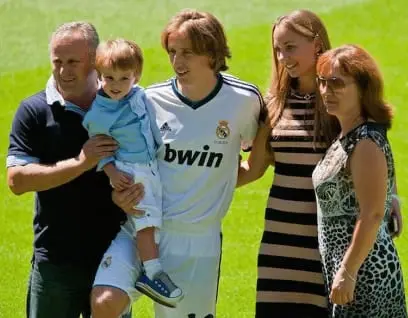
About Luka Modric’s Wife – Vanja Bosnić:
The Love Life of the Real Madrid Legend is centred around one woman. Her name is Vanja Bosnić.

They started dating in 2006, during his loan spell return to Dinamo Zagreb. Luka made her his agent as soon as he developed full trust and confidence in her as the woman of his dreams.
Vanja Bosnic is the strong woman behind Luka Modric. She was the brain behind Luka’s transfer battles that made his move possible from Tottenham to Real Madrid.
Luka Modrić is still madly in love with her green eyes (see above), pretty face, height and long, fat, pretty legs, as seen below.
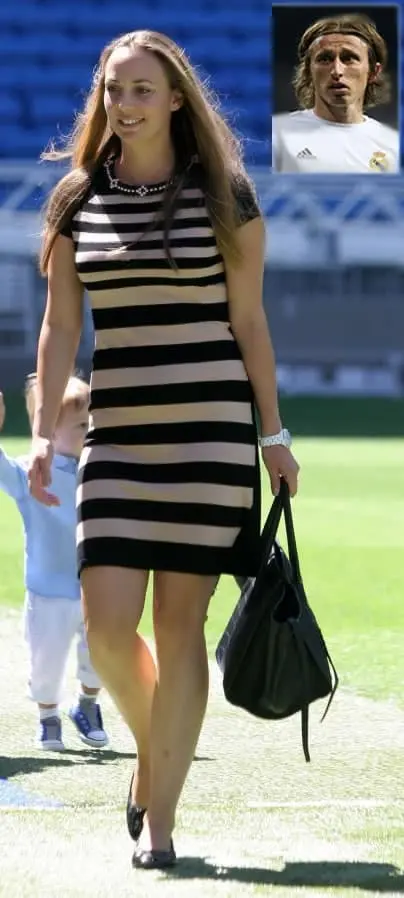
Luka Modric Wife Facts.
A Shy Luka Modric married Vanja Bosnić in May 2010 in the Croatian capital, Zagreb, after four years of dating. His teammate at the time, Vedran Ćorluka, was his best man.

Their marriage was quickly blessed with the fruit of the womb. Vanja Bosnić and Luka’s first son, Ivano, was born on 6 June 2010. Their daughter, Ema, was born on April 25, 2013.
Vanja Bosnić and Luka’s second daughter, Sofia, were born on the 2nd day of October 2017.
Modrić generally lives a quiet family life, all thanks to his humble beginning. He believes he should be seen as a footballer and not a celebrity or model.
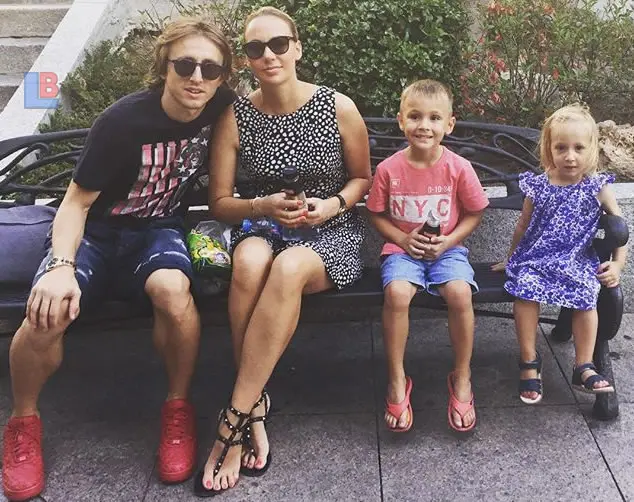
Meet the members of Luka Modric’s family.
“I only ever try to do the best I can on the football pitch. I’m not a model or something. I am a football player,” these are the words of a Real Madrid Legend who’s got his feet rooted to the ground.
The only thing which surpasses football in Luka’s mind is his family. For him, it’s about the two F’s- Football and Family.
Luka Modric Biography Facts – FARE’s ‘Euro 2016 Refugee XI:
Modric is of course, not alone in having flourished through adversity and difficulty to become the footballer he later became. Other footballers, as seen below, were also refugees.
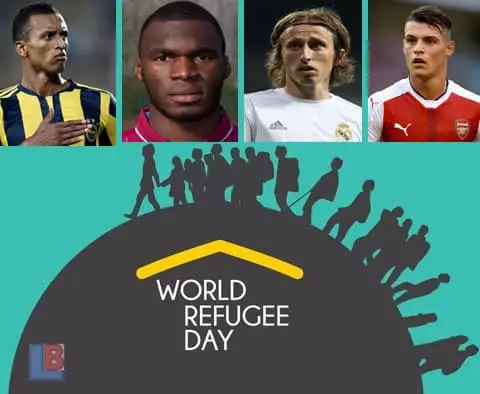
Recently, the anti-discrimination football network – better known as ‘FARE’ – once put together a line-up of footballers who were formerly refugees to celebrate ‘The World Refugee Day’.
This team of players included the likes of Granit and Taulant Xhaka (both brothers), Christian Benteke, Nani and the Great Luka Modric.
They are seen as the world’s most active participants who leave everything behind to celebrate ‘World Refugee Day’.